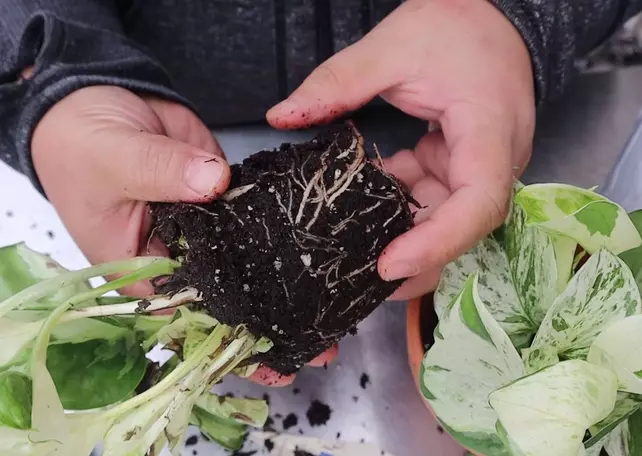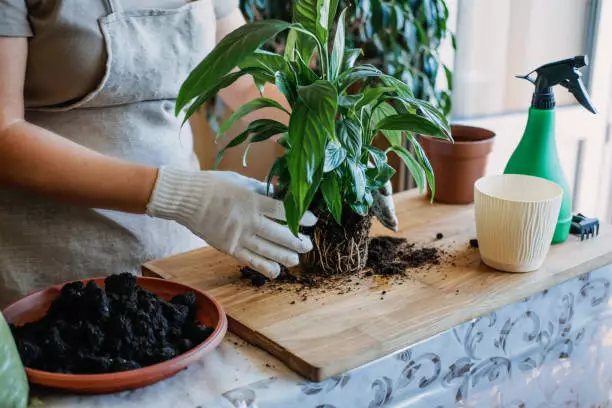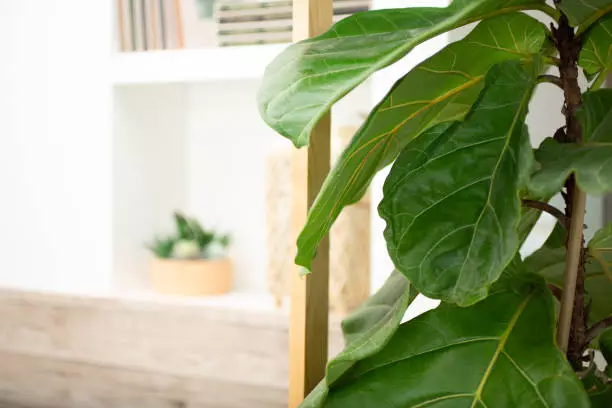Root rot is a disease affecting the roots of a plant. Peace lilies are quite dramatic when it comes to water requirements and if you don’t get that right, the plant can easily get root rot. But how can you identify peace lily root rot and treat it successfully?
Trim the problematic roots and wash away all the soil from the roots to treat peace lily root rot. Remove the fungus-infected soil from the planter and sterilize it. To avoid waterlogging, repot the peace lily and water it lightly. To kill the root rot fungus, you can spray the soil with hydrogen peroxide.
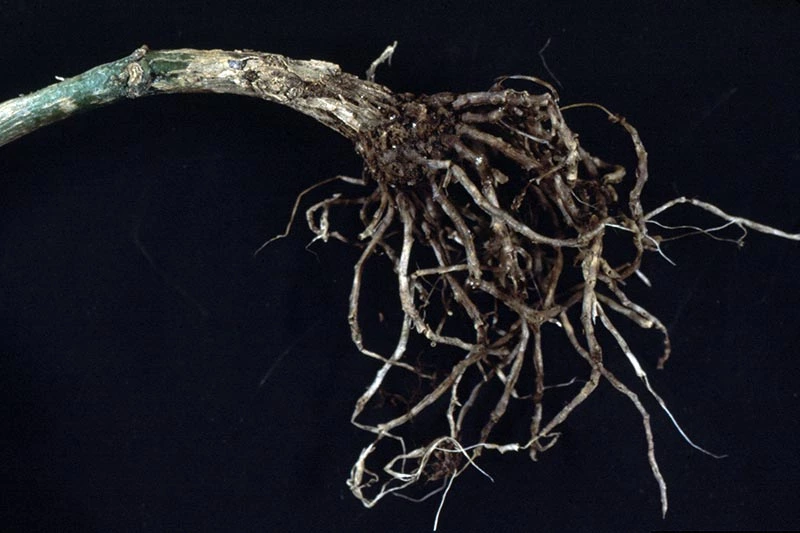
The peace lily plant also known as the closet plant, snow flower, or the white sails, is an evergreen perennial plant that belongs to the Spathiphyllum genus, Araceae family.
About Peace Lily Root Rot
Peace lilies flourish and thrive in well-drained rainforest soils with enough nutrients from decomposed matter in their natural habitat. It thrives in the same conditions as a houseplant, as long as it receives direct sunlight and is watered regularly.
However, Spathiphyllum is also quite prone to root rot disease if not well taken care of. As the name suggests, root rot disease is the decay of plant roots growing in wet and damp areas. If not treated early enough, root rot can cause drying up and the death of a plant.
What causes root rot in peace lilies?
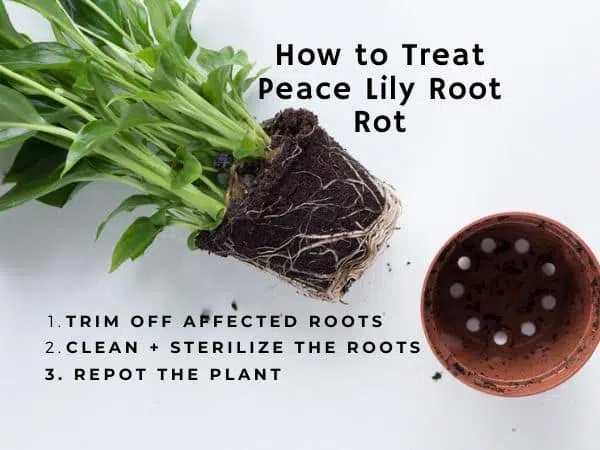
There are two significant causes of root rot disease:
- Overwatered, poorly drained soils: Waterlogged soil makes it impossible for your peace lily to absorb enough oxygen, leading to the death of some roots.
- The presence of fungus in the soil: Mostly, the fungus is usually present in the soil but remains dormant only to thrive in wet and damp soil. The fungus comes to life in waterlogged soil, thus affecting the roots and causing them to decay and die.
Some of the fungi species that flourish in damp soils and cause root rot in plants such as peace lilies are Fusarium, Pythium, Rhizoctonia, and Phytophthora.
Note that when the infected roots start to decay, the disease spreads to the healthier roots and soon after, you’ll start seeing signs and symptoms on the plant’s foliage and general health.
Signs that your peace lily has root rot
Before concluding that your Spathiphyllum is dying from root rot disease, you might want to remove it from the pot and examine the roots first to determine if they’re the cause of leaf discoloration and the constant droopiness.
Here are the signs of root rot in a peace lily plant:
Weak and mushy roots
The first sign of root rot you’ll notice is that the roots will become weak, poorly developed, and mushy. But how do you identify this problem in the first place?
Remove the peace lily from the potting mix in order to examine the roots. Observe for unusual color changes as well as strength.
Pro tip: A plant suffering from root rot will have mushy roots that are evidently weakened. Some may fall off or peel when you hold them with your hand.
The affected roots may look like their normal color (black) just like healthy ones, but if you check closely, they will start to look as though they’re turning grey and frail.
Wilting and drooping
If the soil is moist, the plant is green, well-watered, and still appears wilted or droopy all the time, then this is the earliest sign of root rot caused by overwatering.
If your peace lily is droopy and the soil is dry, then it is highly likely the problem is under-watering and not root rot. In this case, proper watering can revive the peace lily.
Yellow falling leaves
Yellowing, in most cases, can be a result of exposure to direct sunlight. However, if the plant gets indirect sunlight, then the yellowing and falling of leaves could most likely be caused by root rot.
Stunted growth
If your peace lily is unable to absorb the nutrients it needs due to root decay, then deficiency of the plant’s foliage becomes evident. Slow growth in indoor plants may be caused by only a few healthy roots being functional.
Brown leaves
Browning leaves on peace lilies indicate that they may have been overwatered. Make sure the water levels are correct. Water the plant if the soil is dry, especially towards the base of the roots. The presence of water in the soil indicates the presence of root rot disease.
You might want to drain the planter and even consider repotting to treat the problem.
Can a peace lily plant recover from root rot?
Your peace lily plant has high chances of recovering from root rot you identify the signs early enough.With proper treatment such as cutting off the affected roots, and treating with a fungicide, you’ll be able to revive the plant and get rid of root rot disease and its possible causes.
Although it is possible for the plant to recover, the signs of a healthy peace lily may take a few days or even weeks to show. This happens because the treatment procedure may end up shocking the plant as well.
How to Treat Peace Lily Root Rot
There are three ways to treat a peace lily plant from root rot disease. One is to remove all the damaged roots and sterilize the remaining healthy roots, then replanting . The second way is using hydrogen peroxide to water the base of the plant to kill the fungus. The third one is repotting with fresh potting soil.
Repotting peace lily plant
Treating root rot as soon as symptoms appear, when the roots are still strong, solid, and white, gives it the best chance of survival. One of the most effective treatments for root rot in peace lily plants is replanting.
Here’s how to repot your peace lily and get rid of root rot:
- Remove the plant from the soil.
- Wash away soil and the affected roots under running water.
- Trim the remaining part of the affected brown roots using scissors or shears.
- Sterilize the shears or the scissors using an alcohol-based solution
- Prune 1/3 of the leaves to quicken the regrowth of roots as they will not have to support many leaves.
- Dispose of the soil in the plant’s pot.
- Wash the pot in a bleaching solution.
- Dip the remaining healthy roots in a fungicide solution to kill off the remaining root rot fungus.
- Add the potting mix and repot the peace lily plant.
Do not use fertilizers immediately after repotting, as this will stress the already strained roots. Also, ensure you always water the plant when the topsoil dries to the touch. This process will stop the spread of root rot and revive the dying peace lily.
Hydrogen peroxide treatment
Hydrogen peroxide is a good treatment for root rot in many plants. It works by killing unwanted fungi or bacteria. The extra oxygen molecule in hydrogen peroxide boosts the growth of healthy roots.
Here’s how to use hydrogen peroxide to get rid of peace lily root rot:
- Prepare a mixture using the 3% solution in a ratio of one teaspoon of hydrogen peroxide to one cup of water in a spray bottle.
- Water at the base of the plants using a watering can and avoid wetting the leaves.
- If covering a larger area, the 35% hydrogen peroxide will be more economical to use in a ratio of one part hydrogen peroxide to ten parts of water.
Prevention
The best and the most effective root rot remedy for peace lily houseplant is prevention. Prevent root rot by planting peace lily houseplants in loamy, well-drained soil or potting mixture rich in organic matter.
If you’ve grown your peace lily in a garden, enrich the soil with decayed organic matter to facilitate adequate drainage. If the drainage cannot be improved, consider using raised beds with well-draining soil.
Use a potting mixture rich in organic matter if you’re growing your houseplants in a pot. Use a peat-based soil with sand that will hold moisture and nutrients while providing ample oxygen to the roots.
Make sure the peace lily’s pot has holes at the base to facilitate drainage. Above all, observe a proper watering routine.
References
- University of Vermont, Department of Plant and Soil Science: Easy Houseplants—The Peace Lily
- University of Florida: Diseases of Spathiphyllum
